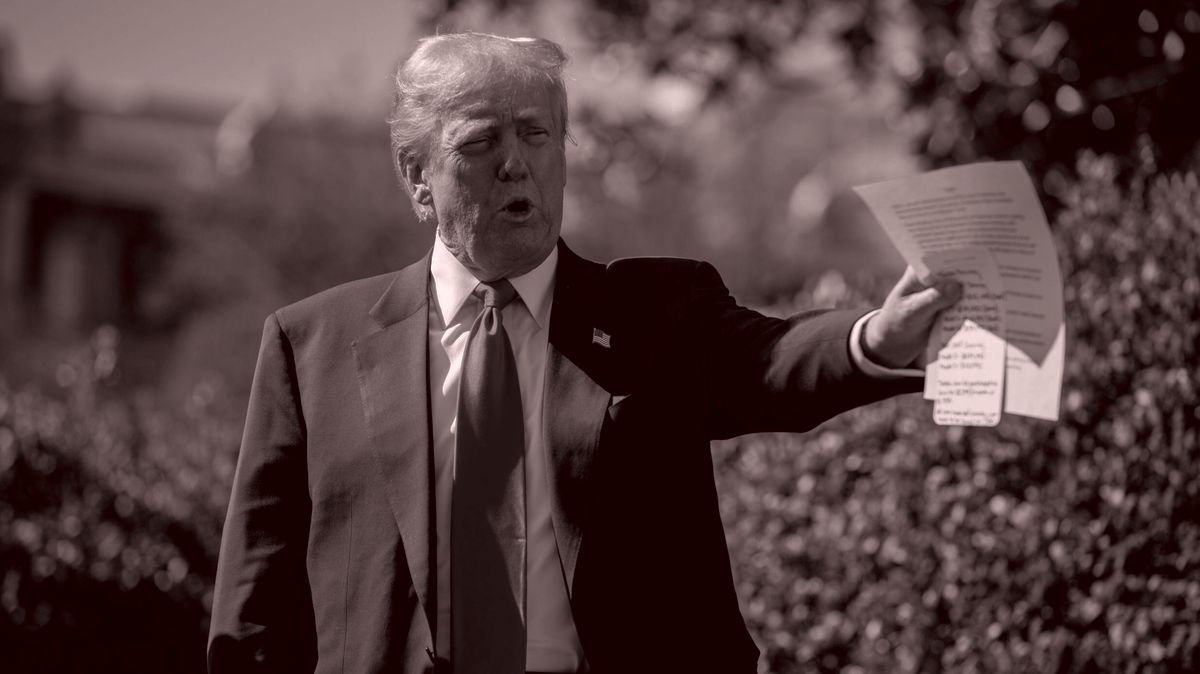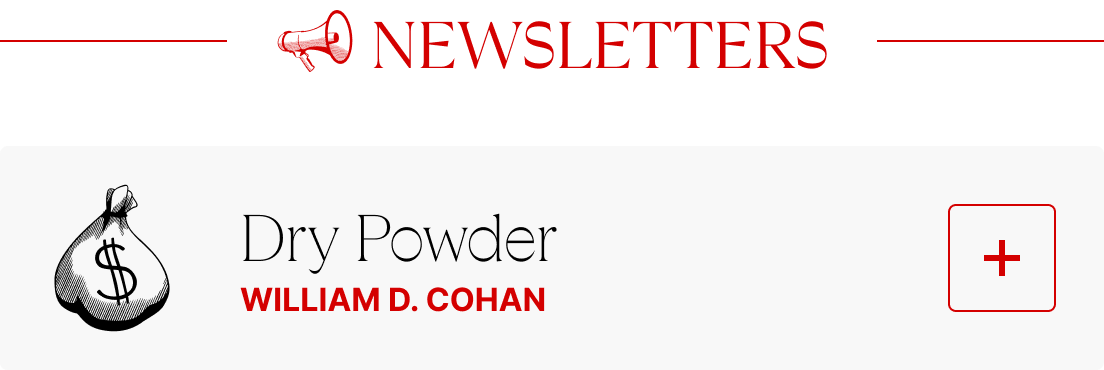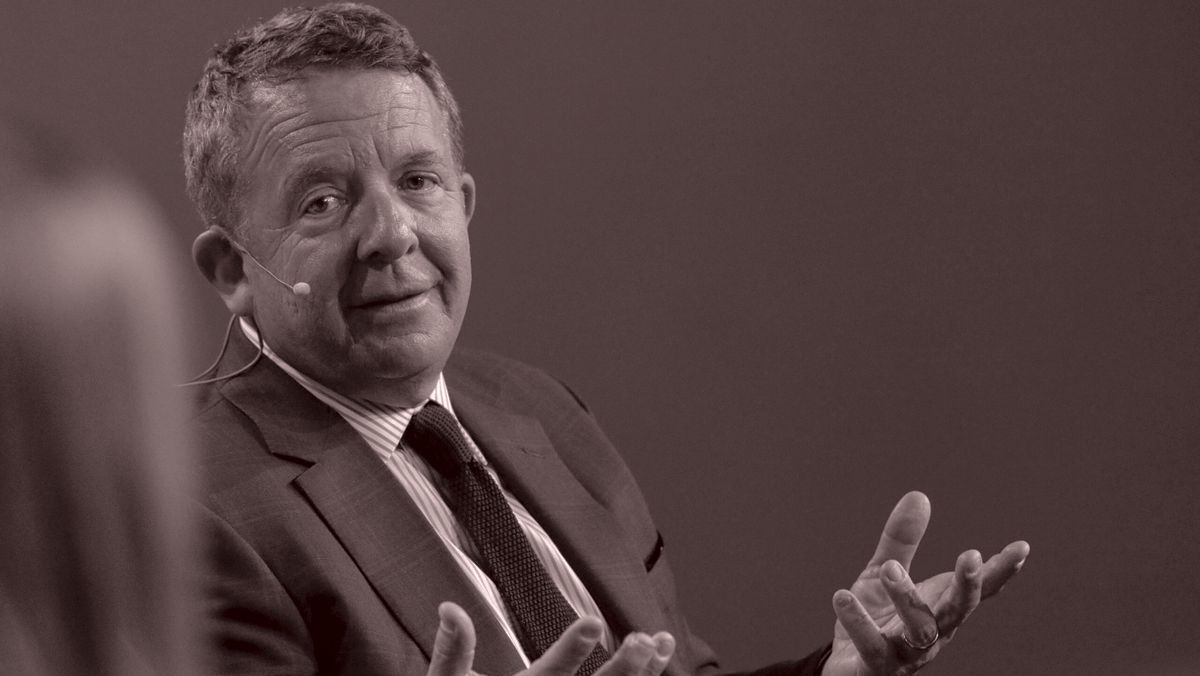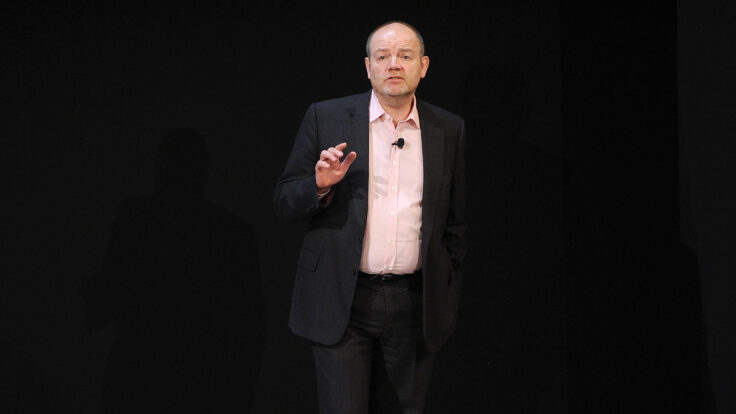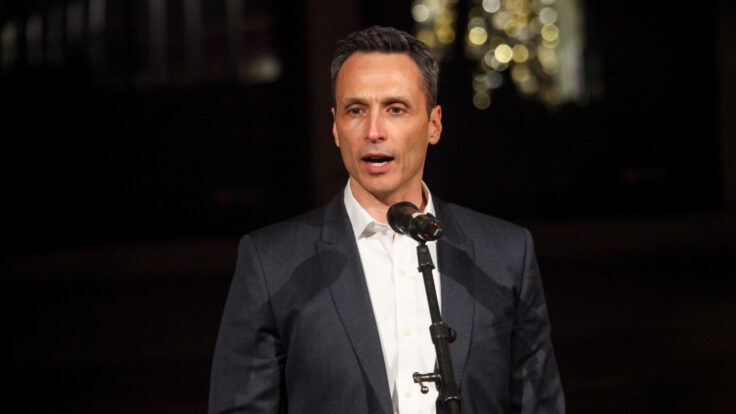Welcome back to The Best & The Brightest. I’m Peter Hamby.
Tonight, a
reality check on the supposed invincibility of Trump 2.0. Almost every available insight into public opinion—including our newest poll, in partnership with Echelon Insights—demonstrates that the rules of political gravity still apply to this still-young and cocky administration. Sure, voters might want Trump to succeed, but his disapproval ratings are shooting up on all the big issues of the moment: the economy, tariffs, foreign policy, and more. These numbers
would be massive red flags for any new president. Can Trump outrun public opinion?
But first…
|
|
|

|
Abby Livingston
|
|
Recess
Ceasefire on the Hill
|
- A Democratic ceasefire: Hakeem Jeffries walked back last week’s perceived diss of Senate counterpart Chuck Schumer, declaring at a news conference today that “yes, yes I do” have confidence in the Democratic minority leader, after repeatedly demurring with “next question” when asked versions of the same question a few days ago. Still, Democrats I’ve spoken with in recent days remain stupefied by the events of last week—in which Schumer
waffled on, and then helped pass, a partisan Republican funding bill that House Dems had almost unanimously voted against. Nonetheless, in a further show of unity, the pair issued a joint statement calling out Republicans for Medicaid cuts.
House Democrats, of course, are not Schumer’s constituency, and there’s no evidence that his leadership of the Senate Democratic caucus is in jeopardy. Schumer’s relationships there run deep, going back even a decade or two in many cases; as a former
D.S.C.C. chairman, he recruited and helped elect many Democratic senators in brutal races and protected others from primaries. Ties like that don’t break over a single episode, no matter how frustrated the larger party is with Schumer at the moment. Plus, to the relief of some colleagues, he shielded those Democratic senators who got to take the politically expedient “no” vote without having to deal with the consequences of a shutdown. It usually takes a pattern of controversies to
topple a party leader. (Kevin McCarthy did not fall from power overnight…)
- When recess ends: When Congress returns on Monday, members will face the much larger fight of the tax and spending bill, which looks different now than it did two weeks ago. The previous assumption was that the SALT provisions in the tax bill would alienate Republican members in the high-cost states of New York, California, and New Jersey. After all, 13 House
Republicans voted against the 2017 version of the bill, and this Congress’s narrower margin had seemed insurmountable for the G.O.P. But Trump and Johnson have now proved multiple times that they can consolidate the House G.O.P. on difficult votes.
The “big beautiful bill” debate will likely squeeze vulnerable Republicans, who will be torn between voting for cuts that are possibly
severe enough to endanger their reelection—or crossing Trump and potentially getting a primary challenge. (In this situation, the dynamics are different from the funding bill debate, in which hard-right, safe-district Freedom Caucus members were the likeliest holdouts.) On policy, House Democrats would prefer to stop the bill, which could pass the Senate with Republicans’ simple majority under budget reconciliation procedures. But politically, Democrats are eagerly watching which vulnerable
Republicans vote for the sweeping cuts (specifically Medicaid) as they get ready to slam those members in their districts in 2026.
|
|
|
And now to the main event…
|
|
|
The president is moving with unprecedented speed—including, it seems, in losing the trust
and political capital of the very people who put him in the Oval Office. Echelon’s new polling numbers reveal the accelerating erosion of public sentiment on the economy, Ukraine, their tariff-tossed 401(k)s, and, yes, the price of everything.
|
|
|
It’s easy to think of Donald Trump as all-powerful. The president faces almost no checks
on his authority as his administration ignores judges, bulldozes federal agencies, tests the boundaries of executive power, and scoffs at Democrats who are too impotent to stop him. His White House is, to put it mildly, extremely cocky. Trump, at least, has the ability to balance out his arrogance with humor. But J.D. Vance, Elon Musk, Stephen Miller, and Karoline Leavitt? The arrogance would be intimidating if
it weren’t so misplaced. Between the sanctimony and the scolding, the flared nostrils and the Tesla sales event at the White House… you’d think these people ruled the world.
But there’s another way to view the Trump administration, and that’s through the lens of public opinion. This administration is self-evidently less popular than it believes itself to be. Barely halfway through its first 100 days, the White House is quickly and dramatically falling out of favor with American voters on
almost every core issue, but most importantly on the concern that brought Trump back to the White House in the first place: the economy.
All of this is according to new polling from Puck’s partnership with Echelon Insights, which has been tracking public opinion about Trump and his administration. Since their January poll of likely voters,
conducted in the days immediately after his inauguration, disapproval of Trump’s handling of the economy has spiked by 9 points, from 40 percent two months ago to 49 percent today. Also going in the wrong direction for Trump: the share of people who say the economic situation in the United States is getting worse.
After Trump’s inauguration, only 39 percent of likely voters said the country’s economic conditions were deteriorating. But that number has climbed a dramatic 10 points in just
eight weeks, as the stock market has spiraled downward along with consumer confidence amid a torrent of bad news cycles about stubbornly high prices and Trump’s schizophrenic approach to tariffs. Echelon now finds that almost half of voters, 49 percent, say the country’s economic situation is worsening, compared to just 32 percent who say it’s improving. The March poll also found that 50 percent of voters say Trump isn’t doing enough to help the stock market. As for tariffs, voters were split on their support, with 45 percent in favor and 45 percent opposed. But when asked whether they’d favor tariffs if they were to lead to increased prices on goods and services, support collapsed: 55 percent said they would oppose tariffs, compared to 32 percent in favor.
One wired G.O.P. consultant in Washington told me on Tuesday that the
White House gang needs to remember its promises from the campaign. “They really have to start delivering tangible victories soon,” the Republican said. “Trump ran on the fact that shit is really expensive now. You obviously can’t make costs go down overnight, but people need to feel progress.” This person noted that the Trump campaign had talked for a year on the campaign trail about lowering costs and ending wars, but came into office letting DOGE take up all the oxygen. “I’m sorry, but food is
just so goddamn important,” the consultant continued. “Dude, just go to the grocery store! I compare what I pay now to what I paid 10 years ago. It’s not even close.”
|
As voters watch their bank accounts shrink, reporters at the White House, sensing weakness, have been
feeling emboldened. Notably, Peter Doocy of Fox News is one of them. In the Brady Briefing Room last week, Doocy asked Leavitt, the press secretary, to explain the tariff-driven volatility in the markets to Americans whose retirement accounts “are getting throttled.” Leavitt, exposed, stumbled over her words and responded with MAGA pablum that was completely detached from all evidence. “If you look at, uh, there is great indication to be optimistic about where the economy
stands.” If Karine Jean-Pierre had delivered an answer like that, Jesse Watters would have been shrieking in primetime.
But it’s not just the markets keeping the White House off-balance. (Wall Street, as the old adage goes, is not Main Street. Only 62 percent of Americans have direct exposure to the stock market.) It’s also everyday pocketbook pain that’s freaking people out. The rate of inflation rose in February for the second month in a row, and just
last week, the University of Michigan’s consumer sentiment index fell to its lowest level since 2022. A Reuters/IPSOS poll from earlier in March found that only 31 percent of Americans believe Trump is doing enough to fix the cost of living, with only two-thirds of Republicans giving the president credit on the issue.
Leavitt was pressed on prices last week, too, and asked when the Trump administration would stop blaming Joe Biden for high prices. “We’ve only
been here for 52 days, but certainly the president is working hard every day to, again, bring down the cost of living, which we see is already happening,” she said. “You see the cost of eggs is going down. You see the cost of gas is going down. Because of the massive deregulatory efforts of the president.” In their poll, Echelon found that voters continue to take Trump’s side when it comes to blaming Biden for high costs. When asked “who is primarily to blame for the high prices of goods,” 48
percent of voters said Biden, while 36 percent said Trump. Leavitt, meanwhile, was correct that the wholesale price of eggs has been declining in recent weeks (mostly because farmers are getting avian flu under control), as have gasoline prices. But prices for most goods and services—coffee, car insurance, restaurant tabs, medical care, interest rates, you name it—remain up, up, up… and don’t show signs of going down. Tariffs are expected to make a wide range of household goods even more
expensive.
The question is how long voters will continue to trust Trump—and blame Biden—as the economy sputters and prices remain agonizingly high. As the G.O.P. consultant reminded me on Tuesday, approval ratings on issues can often be a leading indicator of a president’s overall approval rating taking a hit. And remember, Trump was never that popular to begin with. In the new Echelon poll, Trump’s overall job approval rating is down only slightly from January, going from 51
percent post-inauguration to 49 percent today. But glancing under the hood, not only are voters losing patience with Trump on the economy, but they’re also giving him a noticeably shorter leash on most of the issues that matter.
In the past two months, Trump’s disapproval rating on foreign policy has jumped 7 points—a number to watch after Israel resumed its attacks on Gaza for the first time since the president returned to office. Elon Musk’s disapproval rating has jumped 7
points, too, and a clear majority (52 percent) now disapprove of the billionaire’s budget-slashing role in the federal government. J.D. Vance’s disapproval rating has jumped 5 points since he took office. Echelon also found that more Americans disapprove of the way Trump is approaching the war between Ukraine and Russia, with 47 percent of voters disapproving and 44 percent approving. A plurality of voters (41 percent) said Trump should focus less on promoting cryptocurrencies, compared to a
measly 23 percent who say he should do more to support crypto. Only on immigration—Trump’s calling card—has the president’s approval rating remained relatively steady since he took office.
These poll numbers would be blinking red warning signs for any presidential administration, especially this early in a term, with appointees and staffers still getting used to their fancy desks and business cards. They call it a “honeymoon” for a reason. It’s worth remembering that even though
Biden left office a historically unpopular figure, it still took him seven full months in office before his approval rating went south and sank to unrecoverable depths. If you squint at the data today, it’s possible to envision Trump entering the same doom spiral sooner than many people think.
|
|
|
Join Emmy Award-winning journalist Peter Hamby, along with the team of expert journalists at Puck, as they let you in on the
conversations insiders are having across the four corners of power in America: Wall Street, Washington, Silicon Valley, and Hollywood. Presented in partnership with Audacy, new episodes publish daily, Monday through Friday.
|
|
|
Unique and privileged insight into the private conversations taking place inside boardrooms and corner offices up and down
Wall Street, relayed by best-selling author, journalist, and former M&A senior banker William D. Cohan.
|
|
|
Need help? Review our FAQ page or contact us for assistance. For brand partnerships, email ads@puck.news.
You received this email because you signed up to receive emails from Puck, or as part of your Puck account associated with . To stop receiving this newsletter and/or manage all your email preferences,
click here.
|
Puck is published by Heat Media LLC. 107 Greenwich St, New York, NY 10006
|
|
|
|

